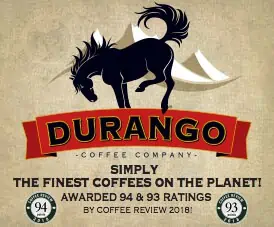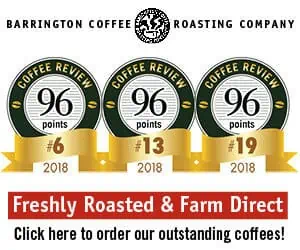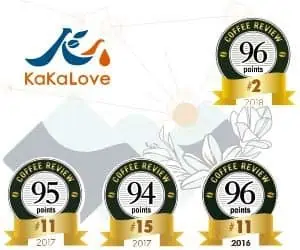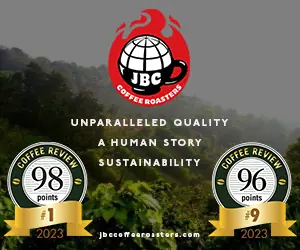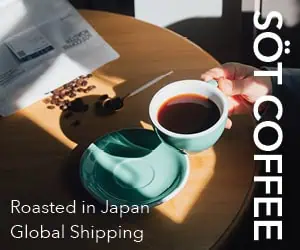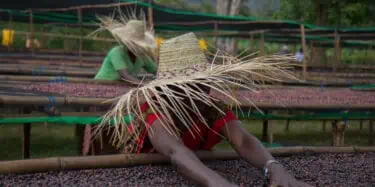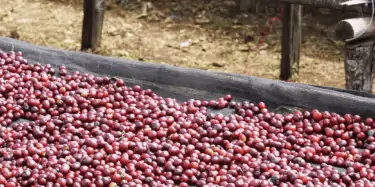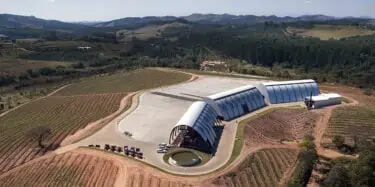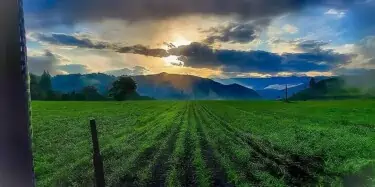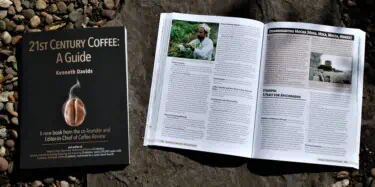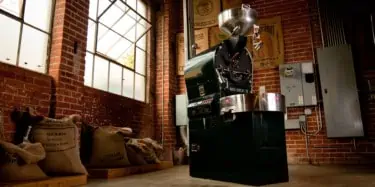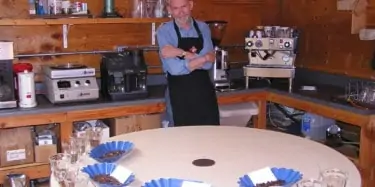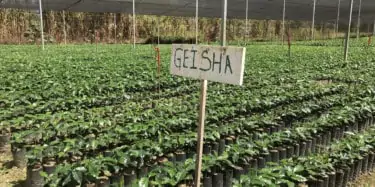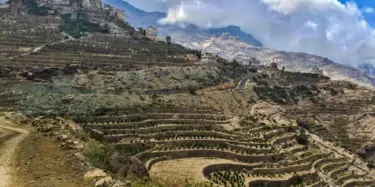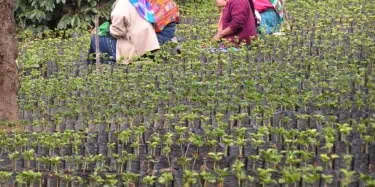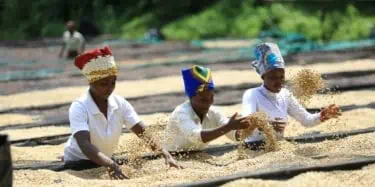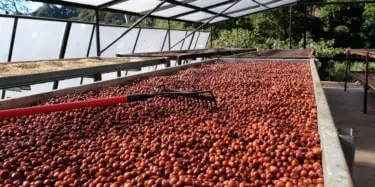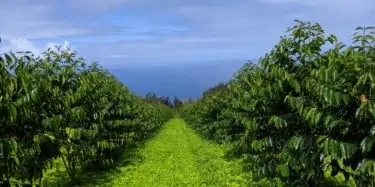While there is much to be said for the new and different in coffee — for surprising new cup profiles generated by the latest processing methods, tiny lots of coffee produced from newly rediscovered tree varieties — there is also a lot to be said for the pleasures of consistency. Even for those coffee lovers willing to pay big bucks for a few extraordinary cups of a super-distinctive
Tasting Reports – Most Recent
Coffee Review has published more than 250 monthly coffee tasting reports since February 1997. The most recent tasting reports appear below in reverse chronological order. You may narrow your search by category from the main navigation drop-downs or by using the key word search feature that appears in the page header. The content in tasting reports and associated reviews was correct at the time of publication but may not remain accurate over time.
Sticking with the Classic: 8 Coffees from Southern California Roasters
The ever-evolving world of specialty coffee continues to see rapid growth in the area of product differentiation, with a strong emphasis on processing innovation at the farm level. In the last decade or so, as the story of each individual coffee has become more important to the consumer, it is variation in processing method that seems to get the most attention. Perhaps that’s because
Fruit Bombs Are the Point: Natural-Processed Espressos Defy Convention
The Coffee Review lab has smelled like a candy store for the last few weeks — a Willy Wonka factory for grownups. Of the hundreds of coffees we cup every year, a growing percentage of them are natural-processed. In the wine world, the word “natural” doesn’t mean anything in particular, is more of a marketing term designed to imply minimal intervention in the winemaking process. In coffee,
Brazil Naturals: Tradition and Innovation
When I first opened a specialty café in Berkeley, California 40 years ago, a Brazil always appeared among the standard whole-bean coffee offerings in the 10 or so glass-fronted bins that held our whole-bean coffees. All of the popular and glamorous coffee origins of the time were there: Guatemala Antigua, Kenya AA, Costa Rica Tarrazu, Sumatra Mandheling, Colombia Supremo, and the new,
Darker-Roasted Coffees: Not Just Old-School Anymore
Every few years, we at Coffee Review like to survey the dark roast landscape. Dark-roasted coffee is a daily staple for some coffee drinkers and anathema to others. But there appears to be a sweet spot that appeals to a wide range of coffee-drinking styles that’s not too light and not too dark, making equal space for those who drink their coffee black and those who doctor
Interview: Kenneth Davids Discusses His New Book, 21st Century Coffee: A Guide
“When my first book about coffee came out in the 1970s,” Coffee Review editor Kenneth Davids says, “people I met at parties used to wonder how I managed to find enough to write about coffee to fill a whole book on the subject.” Given the explosion of coffee innovation and change since then that Davids describes with affectionate yet thorough detail in his latest book, 21st Century
Reflections on the Art of Coffee Blending: Daily Drinkers With Personality
The idea of the coffee blend is a long and winding road. Blends give roasters an opportunity to create a coffee that evokes specific sensory properties, and blends are often designed to give consumers a consistent experience over time (much like a Champagne house approaches the non-vintage brut). But before consumers began insisting upon knowing the origins of what’s in their cup, it wasn’t all
The World and the Cupping Table: 25 Years of Change at Coffee Review
Coffee Review has been reviewing coffees and reporting in depth on the world of specialty coffee since 1997, making this our 25th year of slurping, spitting and writing. Over those 25 years, we have published reviews of thousands of coffees, tasted tens of thousands more, and produced more than 250 in-depth monthly reports on coffee growing regions, processing methods, tree varieties,
An In-Depth Look at the Top 30 Coffees of 2021
Coffee Review’s list of the Top 30 Coffees of 2021 represents our ninth annual ranking of the most exciting coffees we tested over the course of the year. This annual effort supports our mission of helping consumers identify and purchase superior quality coffees and, in the process, helping drive demand and increase prices to reward farmers and roasters who invest time, passion and capital in
Our Love Affair with Geisha — It’s Not Just a Panama Thing Anymore
The Geisha variety of Arabica is the most expensive green coffee in the world. Year after year, this sought-after variety — known for (in the hands of a good roaster) its florality, delicate fruit, integrated structure and balance — breaks new price records in the Best of Panama auction. The Panama with the highest price in 2021 was a Geisha that sold for $2,568.00 — per pound. It’s gotten
Yemen Coffees: Variations on the World’s Oldest Cup Profile
As most readers know, Yemen is the oldest continuously cultivated coffee in the world. The Coffea arabica tree originated in Ethiopia but was first systematically cultivated and commercialized in Yemen starting in about 1500. Until European colonists got into the game about 200 years later, Yemen produced virtually all of the coffee drunk in the world. And, surprisingly, however, much coffee
Tradition, Diversity & Measured Innovation Elevate Guatemala Coffees
While some people in the specialty coffee industry still refer to the “classic Central America cup,” effectively lumping together the diverse coffee-producing countries of Guatemala, Honduras, Nicaragua, El Salvador and Costa Rica, it is more the trend now to make increasingly fine distinctions among these origins in terms of varieties, processing, and cup profiles specific to each. Single-origin
Darker-Roasted Espresso Blends: Variations On A Classic Theme
Each year, the Coffee Review team publishes an espresso report, for which we invite roasters to submit coffees on a specific theme. In typical years, we partner with an independent lab or roaster here in the San Francisco Bay Area and taste the espressos with at least one outside cupper and a barista or two dialing in and pulling shot after shot. But this year is certainly not typical. The
Cold Black Coffee: Simplicity Rules the Post-Pandemic RTD Landscape
While so much in the world of coffee gets “curiouser and curiouser” each year, to echo the protagonist of Lewis Carroll’s Alice in Wonderland — from increasingly complex, mysteriously named green coffee processing methods to new hybrid varieties of Arabica born of necessity to respond to climate change — specialty coffee is a living entity, its success defined by an ability to adapt, both to
African Great Lakes Coffees: Quality in the Face of Adversity
By now, most readers of Coffee Review are familiar with the win-win-hypothesis of specialty coffee: If consumers pay more for better coffee from dedicated producers, and if some of the high prices paid by consumers make it back to those producers, they will be encouraged to generate even better coffees, which will please even more consumers, who will gratefully continue to pay higher prices, and
Fun With Ferment: Anaerobically Processed Coffees
In early April, some rather odd-smelling packages began arriving at the Coffee Review lab. Describing the collective aromas that wafted from them is difficult. And describing those aromas continued to be difficult once we started actually tasting the coffees inside the packages. Certainly, there was lots of fruit and chocolate. And fragrant cut cedar, and sweet flowers. But along with these more
Spring Break In a Cup: Finding Great Coffee Roasters In Coastal Communities
Every year, Coffee Review organizes a report focusing on roasting companies from various regions of the U.S.: in 2018, the Mountain States, in 2019, New England, and in 2020, the Northwest. Given that it’s been a difficult winter, to say the least, this month's report celebrates coffees roasted in U.S. coastal communities, particularly beach towns and tourist destinations. We put out our general
Coffee as a Force for Good: Roasters Who Give Back
Like everything bought and sold, coffee can be a vehicle for profit or a tool for changing the world. Sometimes, it is both. 2020 was, unequivocally, a difficult year for the coffee industry, globally speaking, as it was for many of us working in that industry. One response to the challenges of the COVID-19 pandemic is to help others make it through the storm. Our report this month
Colombia Coffee 2021: Best of Both Worlds or Identity Crisis?
Colombia could be approaching best-of-both-worlds status as coffee producer. On one hand, standard commodity Colombias continue rolling down to the ports and onward into “100% Colombian” supermarket cans and jars, whose quite decent contents put to shame the bland, woody, Robusta-laden contents of competing supermarket cans and jars. At the same time, small lots of specialty Colombia
Celebrating the Top 30 Coffees of 2020
Coffee Review’s list of the Top 30 Coffees of 2020 represents our eighth annual ranking of the most exciting coffees we tested over the course of the year. The Top 30 celebrates and promotes coffee roasters, farmers, mill operators, importers, and other coffee industry professionals who make an extra effort to produce coffees that are not only superb in quality but also distinctive in

